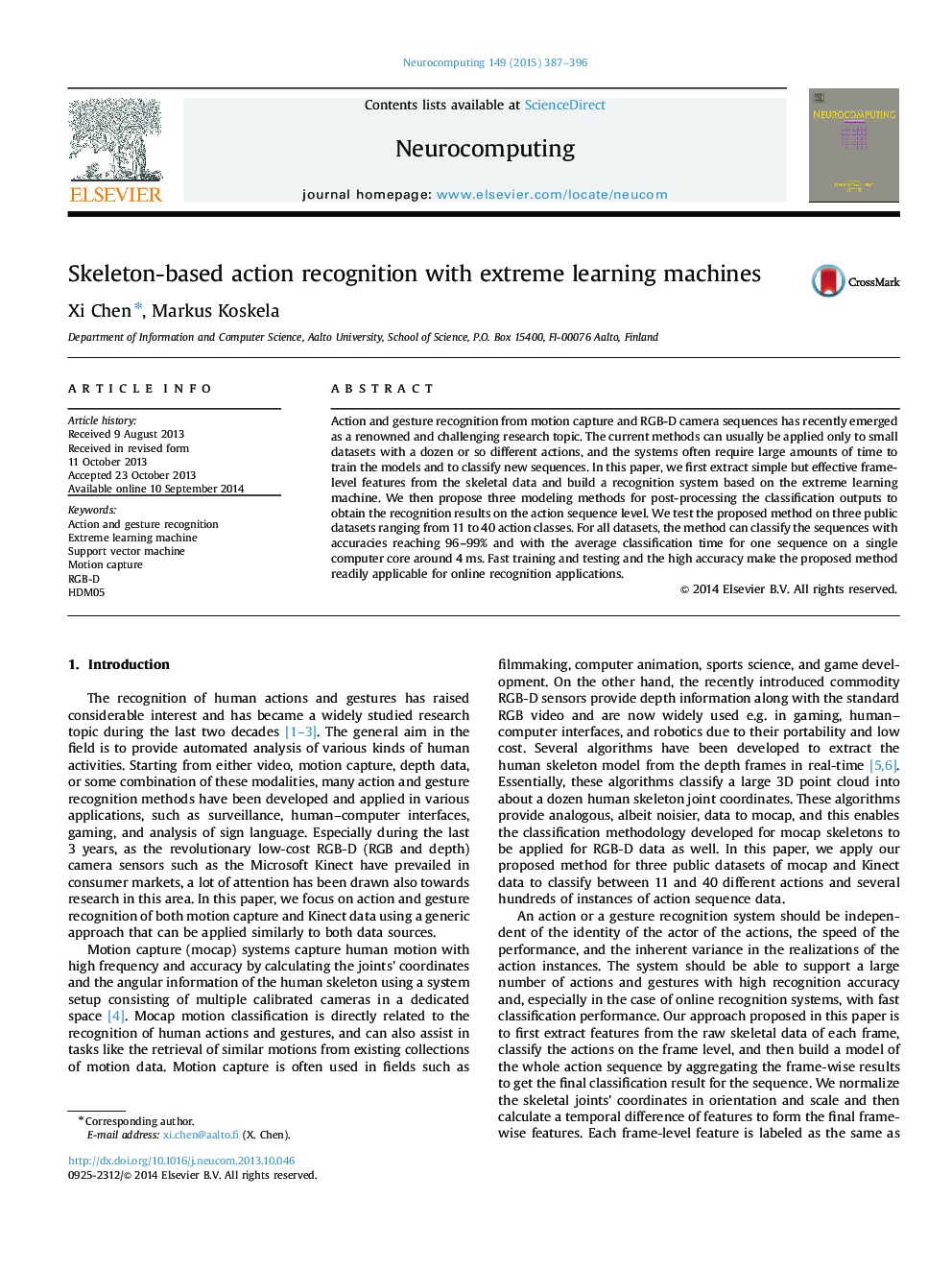| Article ID | Journal | Published Year | Pages | File Type |
|---|---|---|---|---|
| 407736 | Neurocomputing | 2015 | 10 Pages |
Action and gesture recognition from motion capture and RGB-D camera sequences has recently emerged as a renowned and challenging research topic. The current methods can usually be applied only to small datasets with a dozen or so different actions, and the systems often require large amounts of time to train the models and to classify new sequences. In this paper, we first extract simple but effective frame-level features from the skeletal data and build a recognition system based on the extreme learning machine. We then propose three modeling methods for post-processing the classification outputs to obtain the recognition results on the action sequence level. We test the proposed method on three public datasets ranging from 11 to 40 action classes. For all datasets, the method can classify the sequences with accuracies reaching 96–99% and with the average classification time for one sequence on a single computer core around 4 ms. Fast training and testing and the high accuracy make the proposed method readily applicable for online recognition applications.
